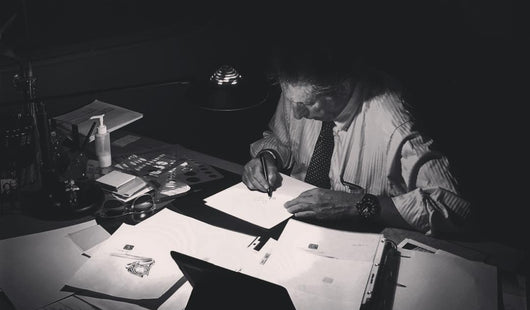
Glossary: Ruby
Rubies are valuable red gemstones commonly used in luxury jewelry pieces. Related to sapphires, rubies are members of the corundum mineral species. In its purest state, corundum is virtually colorless; however, it can take on specific colors when trace elements become part of its crystal structure. When chromium becomes part of corundum, the mineral takes on a red appearance, which ranges from purplish red to orange-red. Thus, a ruby is born.
Where Are Rubies Found?
The most celebrated rubies (such as those from the Himalayas, Myanmar, and northern Vietnam) usually form in marble. The gems are most often found in layers that are irregularly distributed within the marble. In other regions, rubies are mined from basalt rocks. Since these types of rubies tend to have higher iron content; they often have darker, less vibrant colors.
A Rich History
Rubies get their name from the Latin word “ruber,” which translates to “red.” One of the world’s most historically significant gemstones, rubies are commonly referenced in the Christian Bible, often in association with wisdom and beauty. But the gem’s history goes back much further than this. In the ancient Sanskrit language, rubies are referenced using the term ratnaraj, which translates to “king of precious stones.”
Ruby has retained its significance over time, becoming one of the most sought-after gemstones of European royalty and nobility. Many notable medieval Europeans donned ruby necklaces, ruby earrings and other ruby jewelry to promote good health, wisdom, wealth and success in love.
Rubies are still highly coveted today. A symbol of love and passion, the deep red gems make ideal romantic gifts. Consumers are also drawn to the lovely, lush color because it signifies success and wealth.
How Much Is A Ruby Worth?
Ruby values can vary dramatically based on the size and quality of the gem. Color is the biggest factor impacting a ruby’s value. The finest rubies will have a pure, vibrant red color ranging to a slightly purplish hue. As the color becomes more purplish or orangey, the quality will lessen and the value will drop. The highest-quality ruby gems have vivid color saturation.
Rubies are pretty famous for not having a lot of clarity. In fact, even some high-quality rubies will often have fissures or inclusions that are visible to the naked eye. Unlike diamonds, however, these slightly flawed gemstones remain very desirable, even if their price tag might be a bit lower. In other words, while inclusions might affect the value of a ruby; they won’t necessarily impact its beauty. From the standpoint of perceived value, it’s more important to have a nice deep red color than a flawless eye-clean stone.
How Much Does A Ruby Cost?
Although rubies are generally less expensive than diamonds, they are still considered expensive gemstones. One carat ruby prices can range wildly, from $10 to $12,000. More often, you can expect to pay anywhere from a few hundred to a couple of thousand dollars for a ruby. Bear in mind, however, the jewelry design and metal will also affect your overall price.
Unlike many other gems, the price of a ruby is strongly influenced by its area of origin. For centuries Burmese rubies were the most famous and valuable. These days, ruby gems certified to be of Burmese origin still command a higher price than similar rubies from other regions.
How To Tell If A Ruby Is Real
Since rubies are incredibly hard stones, you can identify an imitation by trying to scratch the gem with a coin. Because natural rubies glow with a vivid, deep red, you can also usually spot a fake by looking for dull coloring. To know for sure, however, you will usually have to get input from a knowledgeable jeweler or gemologist.
In reference to imitation rubies, there are a few “fake” stones that are commonly used. This includes everything from red-colored glass to tourmalines to garnet. Imitation gems can also be made using very low-quality natural rubies that are infused with glass.
Grading Rubies
Like diamonds, ruby gemstones are graded in value based on the all-important Four C’s: color, cut, carat and clarity. The deepest shade of reds will usually be the most valuable. With a Mohs' hardness rating of nine, rubies are almost as strong as diamonds. This makes them an exceptional option for rings that must hold up to everyday wear and tear.
At John Atencio, we provide a compelling collection of high-quality ruby gemstones that perfectly complement our beautifully crafted jewelry pieces. Visit one of our convenient locations and let our attentive jewelry experts guide you to a breathtaking jewelry piece.

